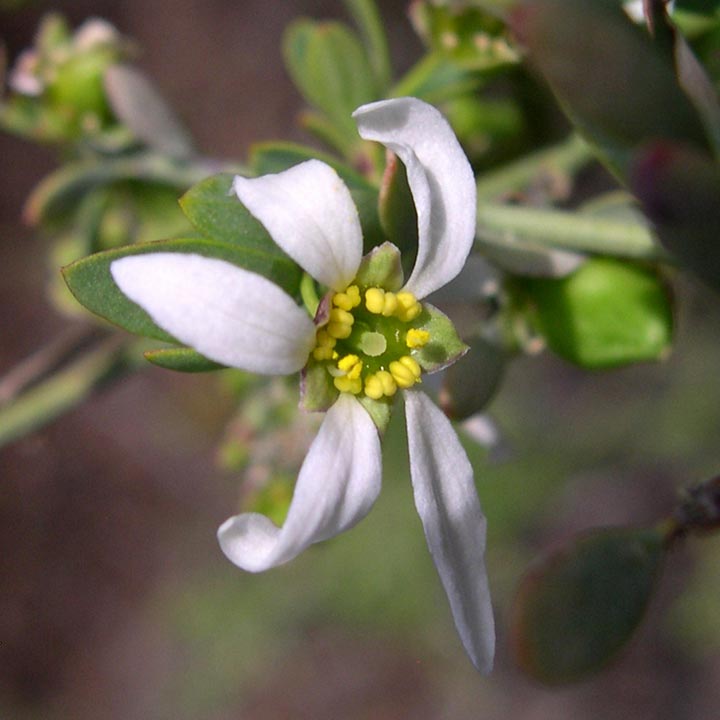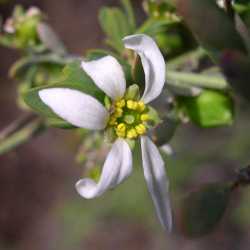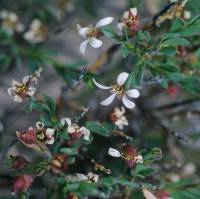PLANT: Intricately or divaricately branched or matted, often spinescent shrubs to 2 m tall.
LEAVES: alternate, entire, crowded or distant, lanceolate, elliptic, to oblanceolate or obovate, 5-10 mm long, forming decurrent lines or ridges on the stem, glabrous or minutely pubescent with ciliolate margins, the apices acute, mucronate or distinctly spine tipped.
FLOWERS: solitary, axillary or terminal on short shoots; glandular disk lining the hypanthium; sepals (4-)5(-6), lanceolate, ovate, or circular, 4-5 mm long, persistent; petals (4-)5(-6), white, narrowly lanceolate to broadly oblanceolate, deciduous, 6-10 mm long; stamens 6-10; carpels 1(-3), sessile; stigma discoid.
FRUITS: striated.
SEEDS: 1-2 with a circular, irregular, whitish aril.
NOTES: A genus of variable, minute characters; 2-3 spp.; w and sc U.S. and n Mex. (Greek: glossa = tongue + petalon = petal, referring to the shape of the petals). Ensign, M. 1942. Amer. Midl. Nat. 27:501-511. Holmgren, N. 1988. Brittonia 40:269-274.
REFERENCES: Mason, Charles T., Jr. Crossosomataceae. . Ariz.-Nev. Acad. Sci. 26(1):2






